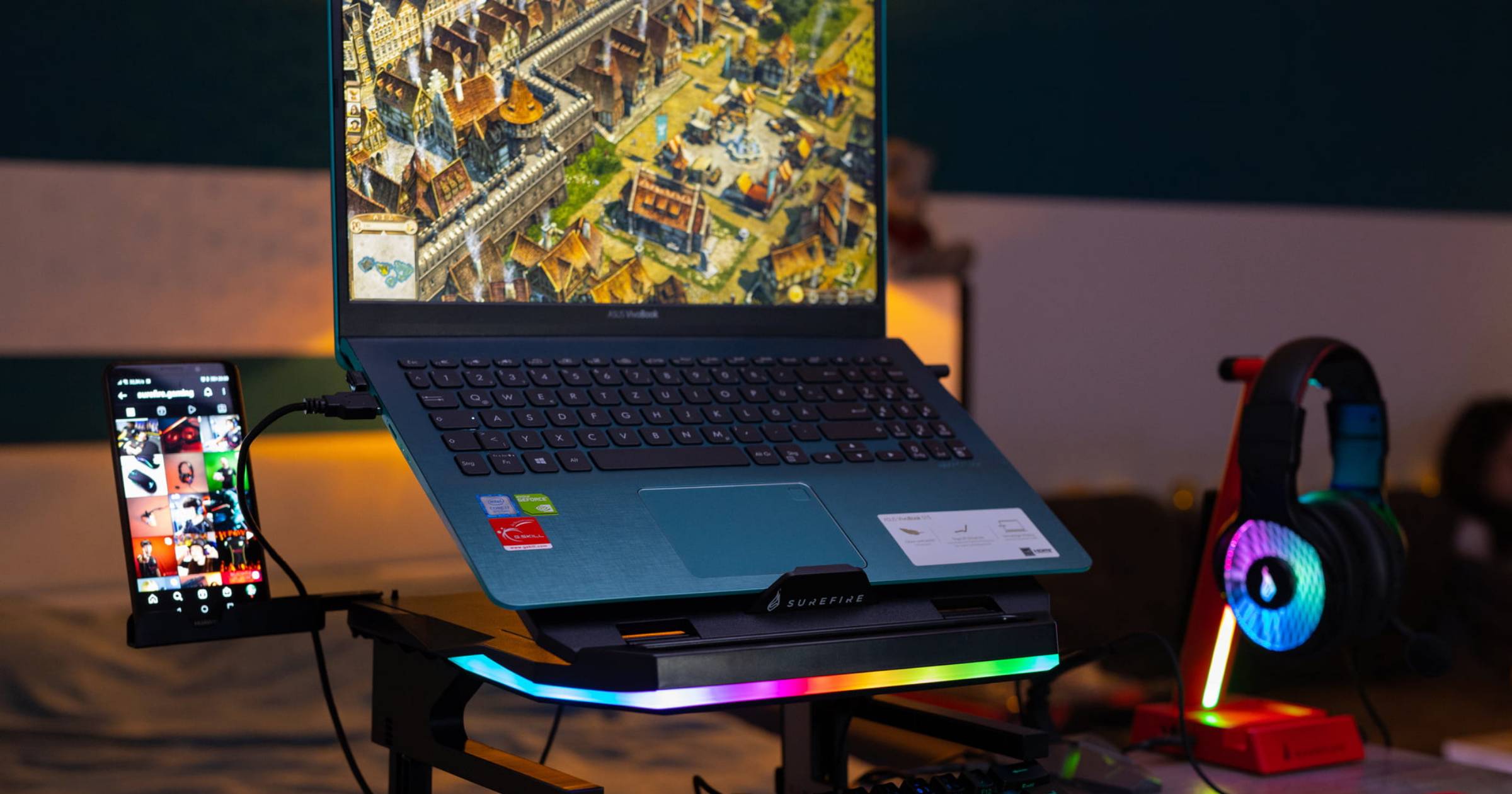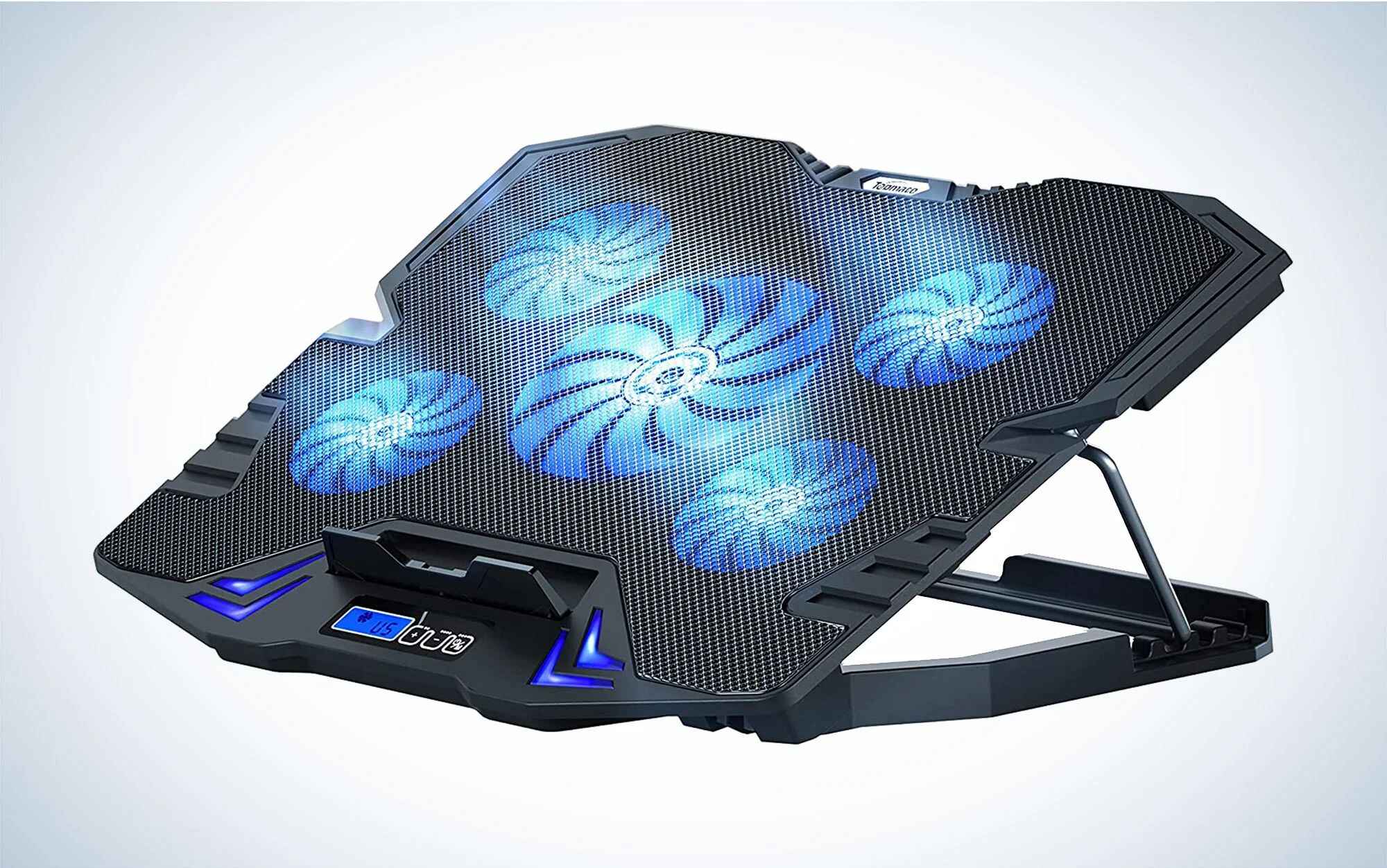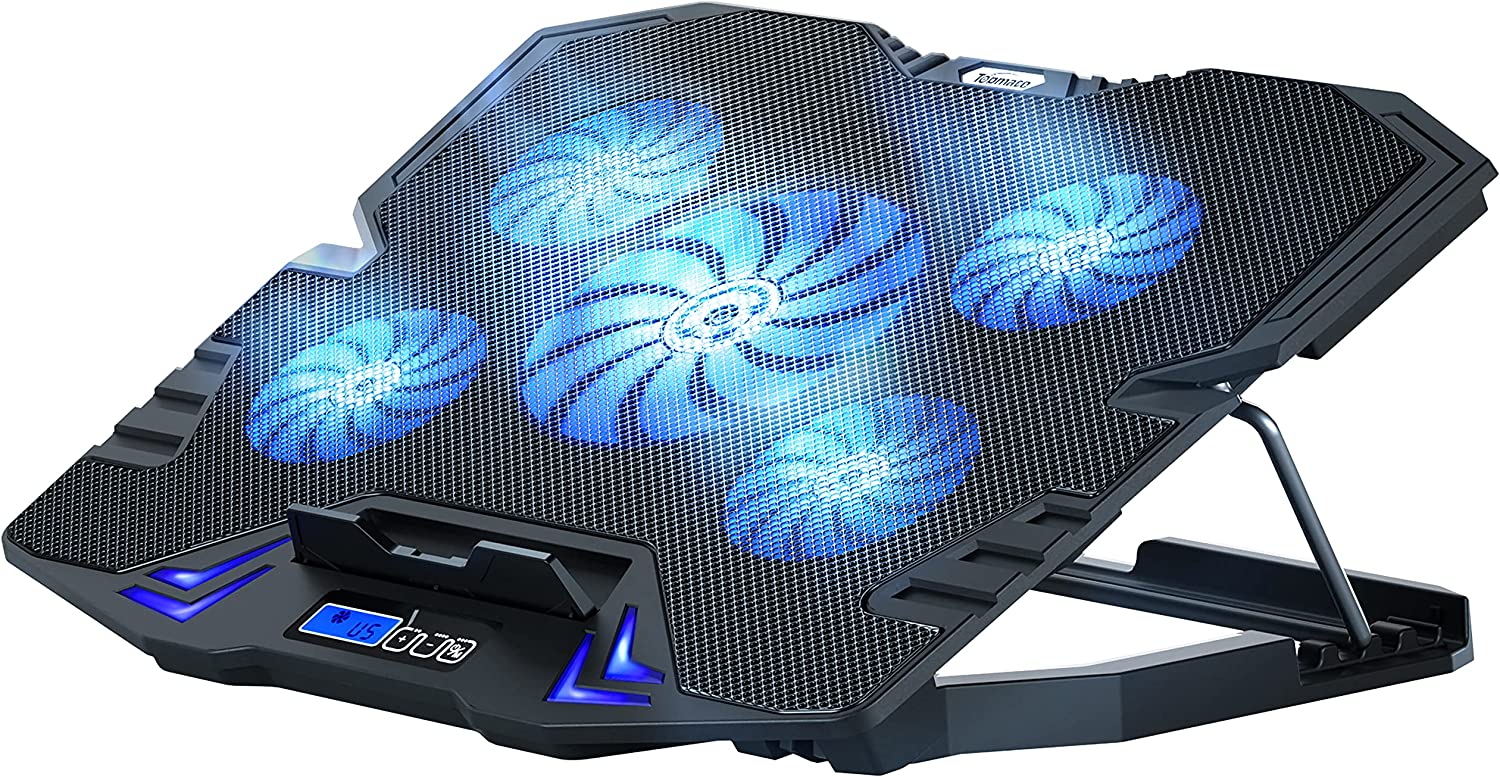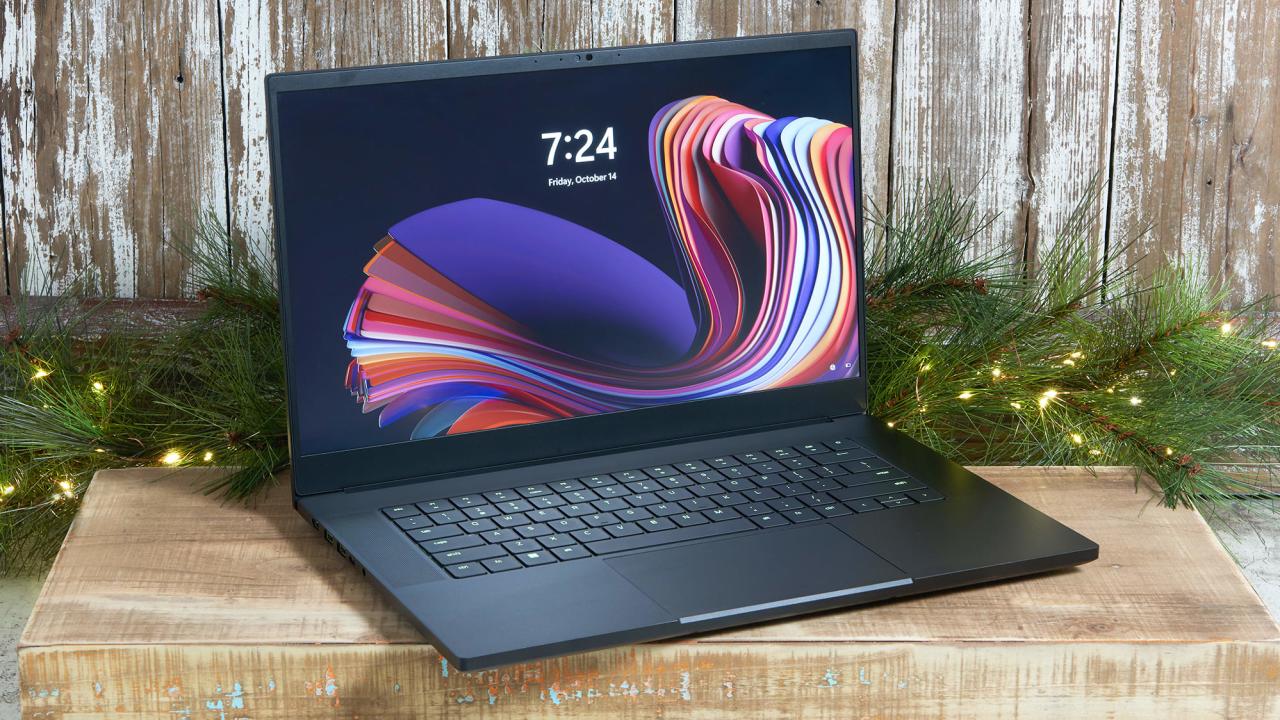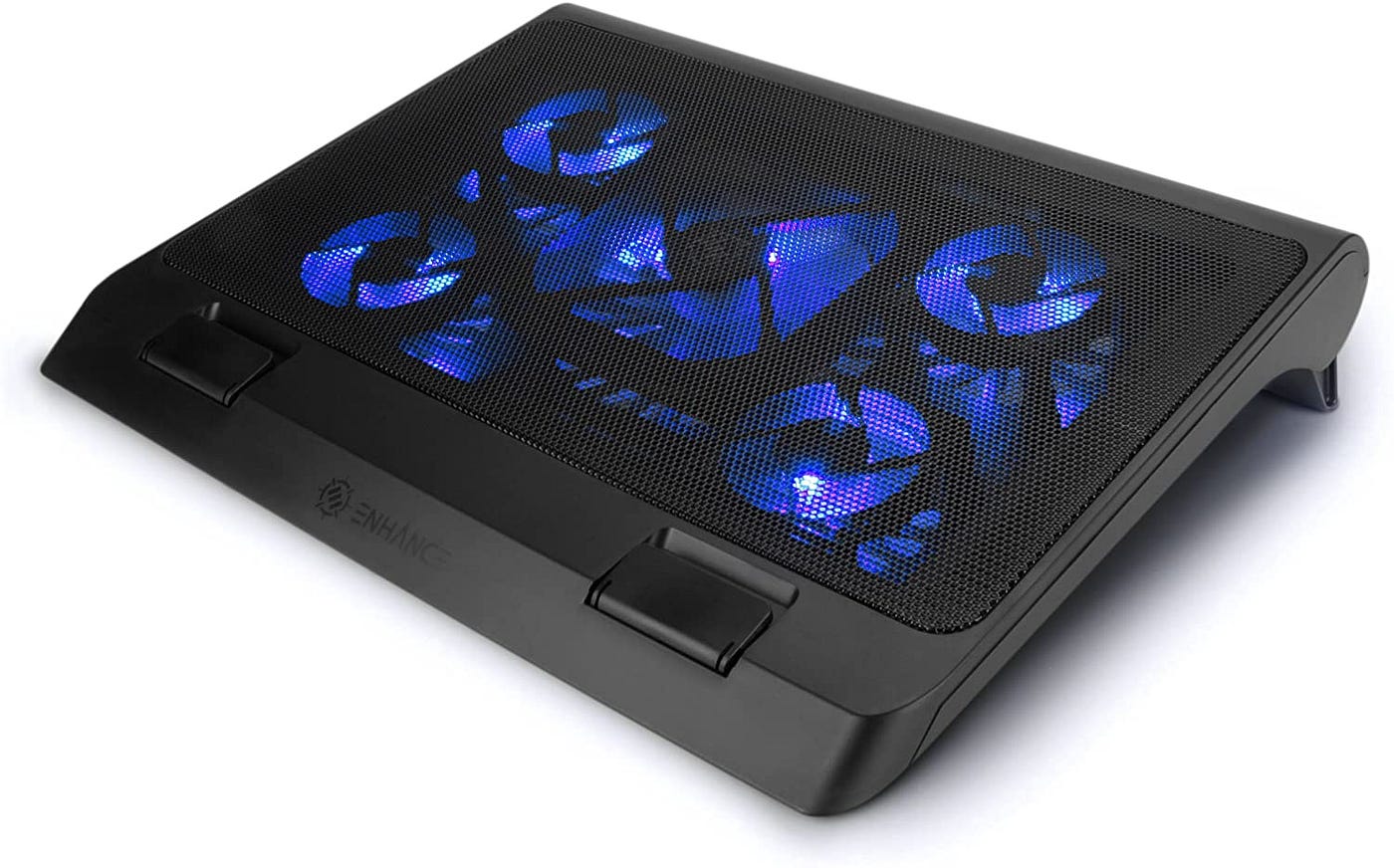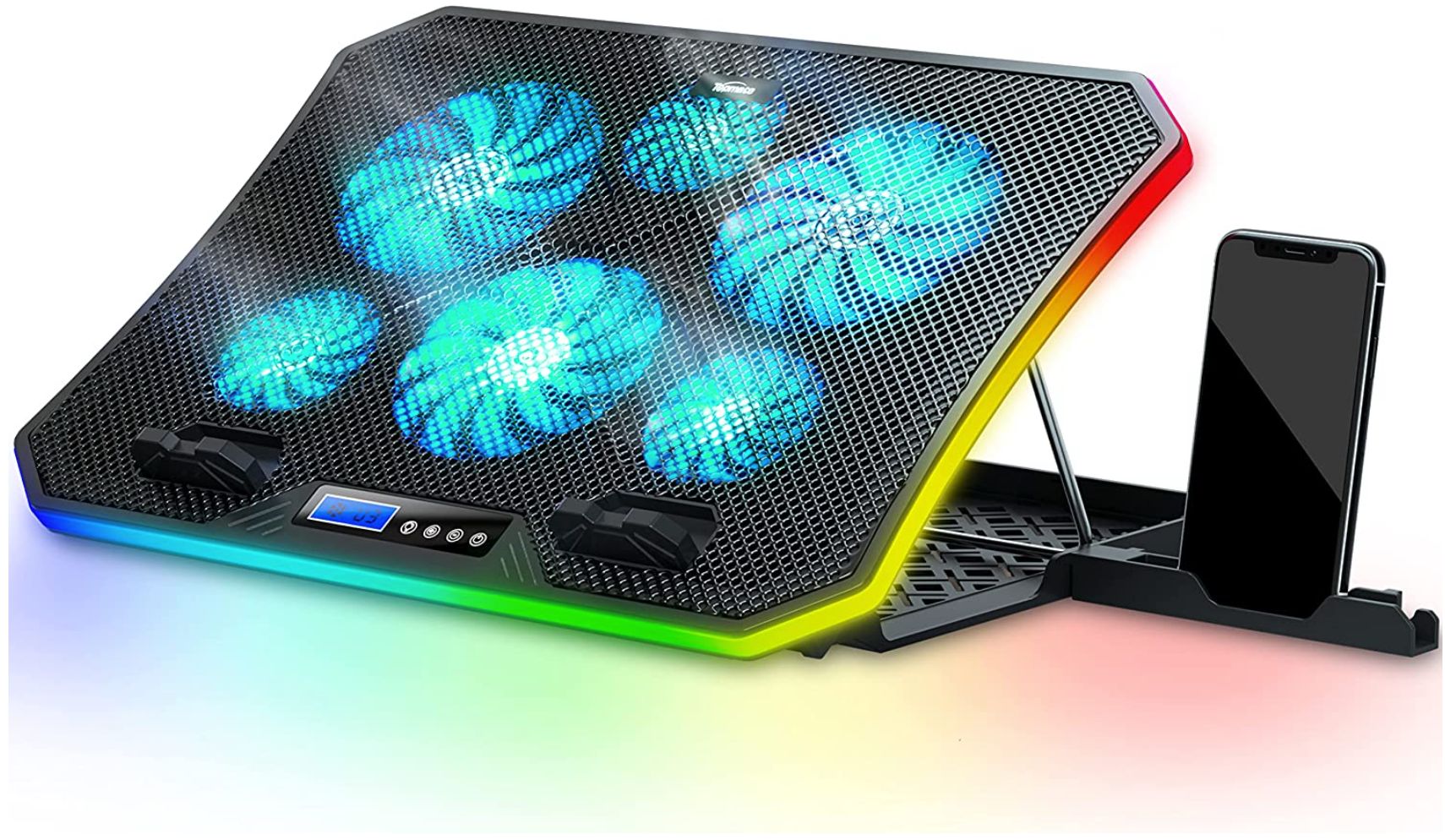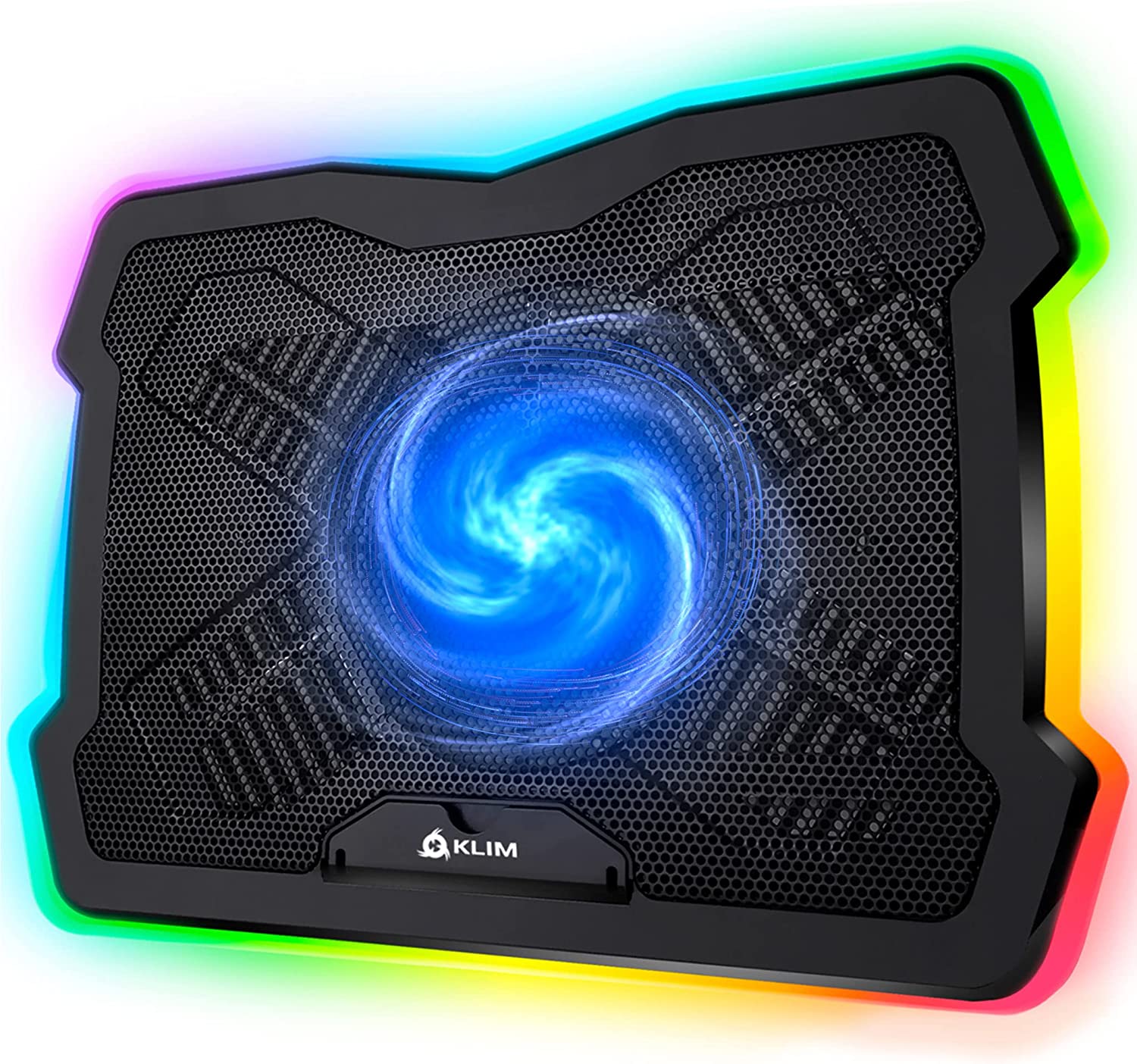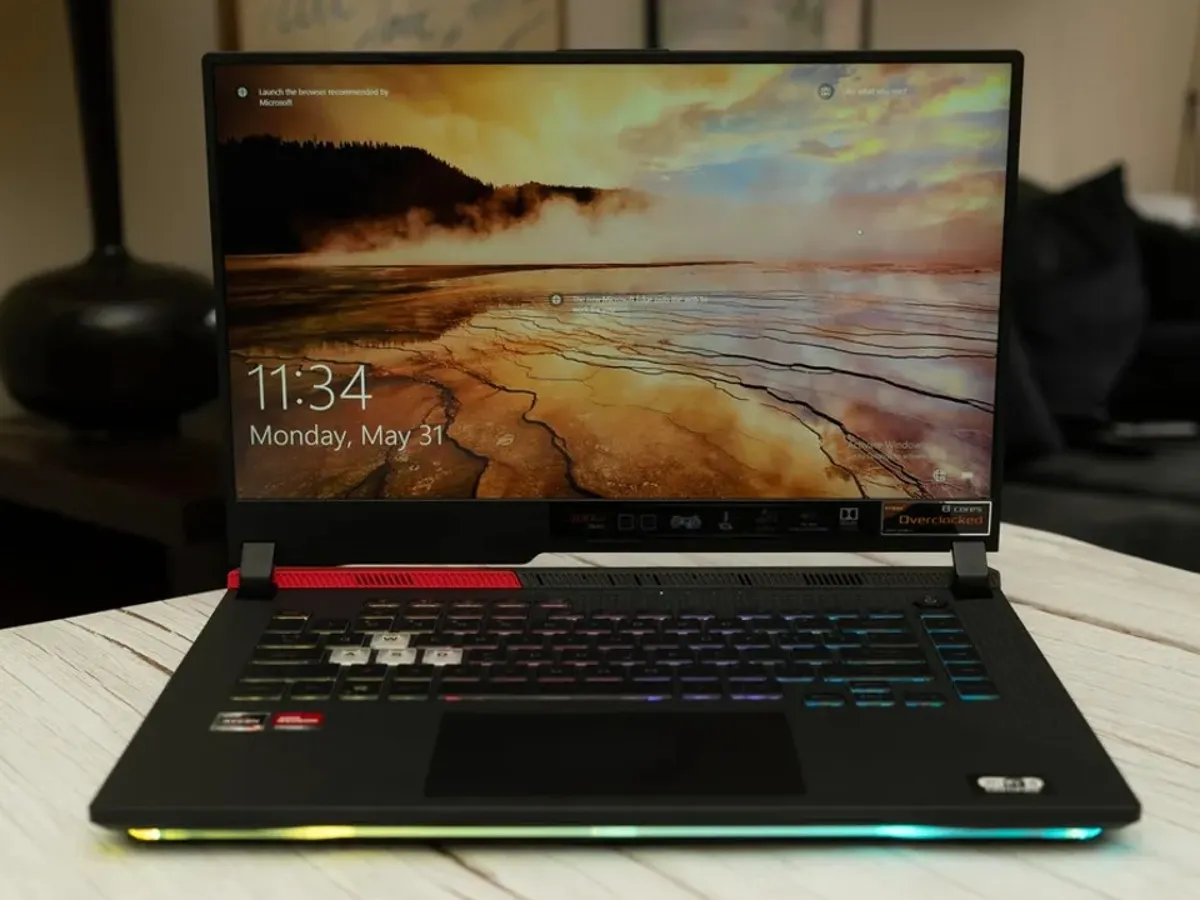Introduction
Gaming laptops are powerhouses designed to handle the demands of graphically intensive games. However, this high-performance capability also generates a significant amount of heat. Excessive heat can lead to various issues, including decreased performance, system crashes, and even permanent damage to your gaming laptop’s components.
Keeping your gaming laptop cool is crucial to ensure optimal performance and longevity. In this article, we will discuss the importance of cooling your gaming laptop and provide practical tips to help you maintain an optimal temperature during those intense gaming sessions.
Overheating is a common problem for gaming laptops due to their compact and slim designs. These devices often feature powerful processors, dedicated graphics cards, and limited space for ventilation. As you push your laptop to its limits, the internal components heat up, and inadequate cooling can lead to the accumulation of heat, causing performance issues and potential damage.
Identifying the signs of overheating is essential to prevent long-term damage to your gaming laptop. Some common indicators include sudden slowdowns, frequent system crashes, the fan constantly running at high speed, or the laptop becoming excessively hot to the touch. If you notice any of these symptoms, it’s time to take action and implement effective cooling strategies.
In the following sections, we will provide you with a comprehensive guide on how to keep your gaming laptop cool. By following these tips, you can mitigate the risk of overheating and ensure that your gaming experience remains smooth and uninterrupted. Let’s dive into these effective cooling methods for your gaming laptop.
The Importance of Keeping Your Gaming Laptop Cool
Properly cooling your gaming laptop is not just about maintaining its performance; it’s also crucial for its overall lifespan. When a laptop gets too hot, the internal components, such as the CPU and GPU, may start to throttle, reducing their performance to protect themselves from overheating. This can lead to a noticeable decrease in frame rates and overall gaming experience.
Moreover, excessive heat can cause long-term damage to the internal hardware. Over time, high temperatures can deteriorate the solder connections and thermal paste, leading to component failure and permanent damage. Repairing or replacing these components can be costly and time-consuming.
In addition to performance and hardware concerns, an overheating gaming laptop can also be uncomfortable to use. The heat generated by the laptop can make the keyboard and palm rest hot, which can be uncomfortable, especially during long gaming sessions.
By keeping your gaming laptop at optimal temperatures, you not only ensure its smooth performance but also extend its overall lifespan. By implementing effective cooling methods, you reduce the risk of hardware damage, system crashes, and unexpected shutdowns, providing you with a more enjoyable and worry-free gaming experience.
It’s important to note that every gaming laptop is different, and the cooling requirements may vary. Factors such as the laptop’s design, airflow, and hardware components can affect the cooling efficiency. That’s why it’s crucial to understand your specific laptop’s cooling needs and implement appropriate measures to address them.
In the next sections, we will discuss various techniques to cool your gaming laptop effectively. By following these methods, you can significantly reduce the risk of overheating and ensure optimal performance, longevity, and comfort while gaming. Let’s explore these cooling tips in detail.
Signs of Overheating in a Gaming Laptop
Detecting the signs of overheating in your gaming laptop is essential to prevent potential damage and performance issues. Here are some common indicators that your laptop may be overheating:
- Sudden slowdowns: If you notice a significant drop in performance, such as lagging gameplay or slow loading times, it could be a sign of your laptop overheating. The CPU and GPU throttling to lower clock speeds when they get too hot can cause these sudden slowdowns.
- Frequent system crashes: Overheating can lead to system instability, causing your gaming laptop to crash or freeze during gameplay. When the internal temperature exceeds safe limits, the system may automatically shut down to prevent further damage.
- Constantly running fan: When your gaming laptop is struggling to dissipate heat, the cooling fans will work harder to maintain an optimal temperature. If you hear the fan running at high speeds consistently, it indicates that the laptop is trying to cool down.
- Excessive heat: If the surface of your gaming laptop feels unusually hot to the touch, it may be a sign of overheating. Pay attention to the area around the keyboard, palm rest, and bottom of the laptop. Excessive heat can also make your gaming experience uncomfortable.
- Unusual noise: Overheating can cause the internal components, such as the fan or hard drive, to work harder and produce unusual noises. Grinding, clicking, or buzzing sounds could indicate thermal issues that need immediate attention.
It’s important not to ignore these signs of overheating in your gaming laptop. Ignoring the problem can lead to long-term damage and decrease your laptop’s lifespan. If you encounter any of these symptoms, it’s crucial to take action and implement effective cooling strategies to prevent further issues.
In the next section, we will explore several practical tips to cool your gaming laptop and keep it running at optimal temperatures. By following these methods, you can address the root causes of overheating and ensure a smooth and enjoyable gaming experience.
Tips to Cool Your Gaming Laptop
Keeping your gaming laptop cool is necessary to maintain optimal performance and prevent potential hardware damage. Here are nine practical tips that can help you effectively cool your gaming laptop:
- Clean the Vents and Fans: Over time, dust and debris can accumulate in the vents and fans, obstructing airflow and causing the laptop to overheat. Regularly clean these areas using compressed air or a soft brush to remove any build-up and ensure proper airflow.
- Use a Cooling Pad: Investing in a cooling pad can significantly improve airflow by elevating your laptop and providing additional cooling fans. These pads usually have built-in fans that help dissipate heat and keep your gaming laptop at a lower temperature.
- Elevate Your Laptop: If you don’t have a cooling pad, consider using a book or a laptop stand to elevate the rear end of your laptop. This simple adjustment enables better airflow underneath the laptop, assisting in heat dissipation.
- Avoid Blocking Airflow: While using your gaming laptop, make sure not to block the vents or obstruct airflow. Avoid placing your laptop on soft surfaces, such as blankets or pillows, which can block the vents and trap heat.
- Optimize Power Settings: Adjust your laptop’s power settings to maximize its cooling efficiency. Choose the “balanced” or “power saver” mode to reduce the strain on the CPU and GPU, leading to lower heat generation.
- Monitor and Limit Background Processes: Close any unnecessary applications and background processes that may be consuming system resources and generating additional heat. Task Manager or third-party software can help you identify and manage resource-intensive processes.
- Use Compressed Air for Deeper Cleaning: Periodically, open up your laptop and use compressed air to clean the internal components and remove accumulated dust, especially from the fan blades and heat sinks. This deep cleaning can help improve cooling efficiency.
- Consider Undervolting: Undervolting is the process of reducing the voltage supplied to your CPU, which can result in lower heat generation. However, this process requires careful adjustment and should only be done following proper guidelines and with the necessary knowledge.
- Properly Position Your Laptop: When using your gaming laptop, ensure that the vents are not blocked and that there is enough space for proper airflow. Place the laptop on a flat, hard surface like a desk or use a laptop cooling pad to create an optimal cooling environment.
By following these tips, you can effectively cool your gaming laptop and mitigate the risk of overheating. Remember that every gaming laptop is unique, so it’s essential to experiment and find the combination of strategies that works best for your specific device. By prioritizing cooling, you can enjoy longer gaming sessions with improved performance and increased longevity for your laptop.
Clean the Vents and Fans
One of the simplest and most effective ways to cool your gaming laptop is by regularly cleaning the vents and fans. Over time, dust, hair, and debris can accumulate in these areas, obstructing airflow and causing the components to overheat.
To clean the vents and fans, start by turning off your gaming laptop and unplugging it. Use a can of compressed air or a soft brush to gently remove the dirt from the vents. Be careful not to apply too much pressure or use sharp objects that could damage the delicate components.
For the fans, hold them in place with a toothpick or a small implement to prevent them from spinning uncontrollably when you blow the compressed air. Direct short bursts of air into the fan blades and allow the dust to be expelled out of the laptop. This process helps to dislodge any built-up dust and improve the cooling efficiency.
It’s important to note that cleaning the vents and fans should be done regularly, depending on your usage and the environment in which you use your laptop. Ideally, you should aim to clean them every three to six months or more frequently if you notice significant accumulation.
By keeping the vents and fans clean, you improve the airflow, allowing the heat generated by the internal components to escape more efficiently. This simple maintenance task can go a long way in preventing overheating and maintaining optimal performance.
Implementing regular cleaning as part of your laptop maintenance routine can significantly extend the lifespan of your gaming laptop. It is a simple and cost-effective solution that can have a noticeable impact on the temperature and overall performance of your device.
Use a Cooling Pad
When it comes to keeping your gaming laptop cool, investing in a cooling pad can be a game-changer. A cooling pad is a specialized accessory designed to improve the airflow around your laptop.
A cooling pad typically consists of a flat surface with built-in fans and adjustable height settings. By elevating your gaming laptop and providing additional cooling fans, it helps to dissipate heat more effectively.
To use a cooling pad, simply place your laptop on top of it. The cooling pad’s fans will circulate air underneath the laptop, enhancing the overall airflow and cooling capacity. The additional cooling fans also help to prevent hotspots and maintain a more consistent temperature throughout the device.
When choosing a cooling pad, consider factors such as the size of your gaming laptop, the number and position of the cooling fans, and the portability of the cooling pad itself. Look for a model that suits your needs and provides adequate cooling for your specific laptop.
Using a cooling pad not only helps to reduce the temperature of your gaming laptop, but it also improves your overall gaming experience. By keeping your laptop cool, you can maintain optimal performance, prevent unnecessary system throttling, and minimize the risk of overheating-related issues.
In addition to cooling, some cooling pads feature ergonomic designs that offer better typing and viewing angles. This can enhance your comfort during long gaming sessions and reduce strain on your wrists and neck.
A cooling pad is a worthwhile investment if you frequently use your gaming laptop for intense gaming or resource-intensive tasks. It is a portable and convenient solution that can significantly improve the cooling efficiency and prolong the lifespan of your laptop.
Remember to choose a cooling pad that suits your specific needs and ensure that it is compatible with your gaming laptop. With a cooling pad, you can enjoy prolonged gaming sessions with optimal performance and peace of mind knowing that your laptop is kept cool and protected from overheating.
Elevate Your Laptop
Elevating your gaming laptop is a simple yet effective method to cool it down. By providing sufficient space for airflow underneath the laptop, you can dissipate heat more efficiently and prevent overheating.
When your laptop sits flat on a surface, such as a desk or table, it restricts the airflow and traps heat, leading to temperature buildup. By elevating the rear end of your laptop, you create a gap between the bottom of the laptop and the surface, allowing air to circulate more freely.
There are several ways to elevate your laptop. One popular method is to use a book or a laptop stand. Place the book or stand under the rear end of your laptop, lifting it slightly. This adjustment not only improves airflow but also provides a more comfortable viewing angle.
If you prefer a more permanent solution, you can use laptop cooling pads that feature adjustable height settings. These cooling pads allow you to adjust the height based on your preference and the cooling needs of your laptop. Experiment with different angles to find the optimal position that provides the best cooling effect.
By elevating your laptop, you also reduce the strain on the internal cooling fans. When your laptop is flat on a surface, the fans need to work harder to push out the hot air. Elevating the laptop allows the fans to operate more efficiently, promoting better heat dissipation.
It’s important to note that when using a laptop stand or a cooling pad, ensure the stability and balance of your laptop. Make sure it is placed securely on the elevated surface to prevent any accidental slips or falls.
Elevating your laptop is a cost-effective and straightforward method to improve its cooling efficiency. By allowing better airflow, you can prevent excessive heat buildup, maintain optimal performance, and extend the lifespan of your gaming laptop.
Remember to regularly check and clean the vents and fans even when your laptop is elevated. Elevated or not, proper maintenance is crucial to ensure that your laptop remains free of dust and debris, maximizing its cooling capabilities.
Avoid Blocking Airflow
Ensuring proper airflow around your gaming laptop is essential to prevent overheating. Blocking the vents or obstructing the airflow can contribute to heat buildup, leading to reduced performance and potential damage to your laptop’s components.
When using your gaming laptop, avoid placing it on soft surfaces such as blankets, cushions, or beds. These materials can block the vents located at the bottom of the laptop, impeding the intake of fresh air and the expulsion of hot air.
Instead, opt for a hard and flat surface like a desk or a table. This allows the vents to remain unobstructed, promoting better airflow and heat dissipation. If you must use your laptop on a soft surface, consider using a laptop cooling pad or a firm book as a makeshift base to elevate the laptop and create airflow space.
Additionally, be mindful of other objects around your laptop. Ensure that there is ample space on the sides and back to allow air to circulate freely. Avoid placing your gaming laptop against a wall or near other items that may block the vents or restrict the airflow.
Taking these precautions not only helps in cooling your laptop but also reduces the risk of overheating-related issues. By allowing the laptop to “breathe” and maintain proper airflow, you can optimize performance and minimize the risk of thermal throttling or sudden shutdowns.
Furthermore, if you use an external cooling fan or cooling pad, ensure that it doesn’t obstruct the laptop’s built-in vents. The additional cooling devices should complement and enhance the cooling system of your gaming laptop, not obstruct it. Proper placement and alignment of the external cooling devices are crucial to avoid hindering the laptop’s ventilation system.
Remember to periodically check the ventilation areas of your laptop for any obstructions or dust build-up. If you notice any blockages, gently clean them using compressed air or a soft brush to ensure proper airflow and efficient cooling.
By being mindful of the positioning of your gaming laptop and avoiding any blockages, you can significantly improve its cooling performance. This simple practice can help maintain optimal temperatures, extend the lifespan of your laptop, and ensure smooth and uninterrupted gaming sessions.
Optimize Power Settings
Optimizing the power settings on your gaming laptop can have a significant impact on its cooling efficiency. By adjusting the power settings, you can reduce the strain on the CPU and GPU, resulting in lower heat generation and improved overall temperature management.
To optimize power settings, navigate to the power options in your laptop’s control panel or settings menu. Depending on your operating system, you may find different power modes or plans available, such as “balanced,” “power saver,” or “high performance.”
While the “high-performance” mode offers maximum performance, it also increases power consumption and generates more heat. Instead, consider selecting the “balanced” or “power saver” mode to reduce the power output and heat generation of your gaming laptop.
The “balanced” mode strikes a good balance between performance and energy efficiency. It caps the CPU frequency, reducing its power consumption and heat generation. This mode allows your laptop to function optimally without unnecessarily straining the components.
On the other hand, the “power saver” mode further reduces the power output by limiting the CPU and GPU performance. While this mode may result in lower performance, it significantly decreases heat generation, making it ideal for less demanding tasks or extended usage periods when optimal cooling is a priority.
Consider experimenting with different power modes to find the right balance for your gaming needs. You can also customize these power plans to suit your preferences and requirements. Adjusting the sleep and hibernation settings can help save power during idle periods, reducing heat output even further.
Keep in mind that lowering the power settings may cause a slight decrease in performance, particularly in resource-intensive games or applications. However, the trade-off is often worth it for a cooler and more stable gaming experience, especially if you find that your laptop tends to overheat during extended gaming sessions.
By optimizing the power settings, you can effectively manage heat generation and reduce the strain on your gaming laptop’s cooling system. This not only helps in maintaining lower temperatures but also improves overall energy efficiency and extends the lifespan of your laptop’s components.
Remember to adjust the power settings accordingly, based on your usage requirements. Whether you’re engaging in intense gaming or working on basic tasks, selecting the appropriate power plan can make a significant difference in the cooling efficiency and performance of your gaming laptop.
Monitor and Limit Background Processes
Background processes running on your gaming laptop can consume system resources and generate additional heat. Monitoring and limiting these processes can help reduce the strain on your laptop’s components and prevent unnecessary heat buildup.
One way to monitor background processes is by using the built-in Task Manager on your operating system. Open Task Manager and navigate to the “Processes” or “Details” tab to see a list of running processes and their corresponding resource usage. Look for applications or processes that are using a significant amount of CPU or memory.
Identify any unnecessary or resource-intensive processes that can be closed or disabled. These may include software update managers, background utilities, or unnecessary startup applications. Right-click on the process and select “End Task” or “Disable” to stop them from running.
Certain applications, such as antivirus software or system optimization tools, may also have settings that allow you to limit their resource usage. Explore the settings of these applications to adjust their performance profiles and prioritize low-resource consumption.
Additionally, the operating system itself may have settings that allow you to control background processes. For example, in Windows 10, you can access the “Background Apps” settings to choose which apps are allowed to run in the background.
Limiting and optimizing background processes not only reduces the CPU and GPU workload but also helps in lowering the overall heat generated by your gaming laptop. With fewer processes running in the background, the cooling system can focus on keeping the critical components cool and prevent excessive heat buildup.
Regularly monitoring and managing background processes is especially important during gaming sessions. Closing unnecessary applications and processes can free up resources for your game, ensuring smoother gameplay and preventing overheating-related issues like sudden frame rate drops or system crashes.
Furthermore, reducing the number of active processes can also improve overall system responsiveness and performance. By allocating more resources to your game, you can enjoy a better gaming experience with a cooler and more stable laptop.
Remember to strike a balance between limiting background processes and maintaining essential functionality. Some processes may be necessary for the proper functioning of your operating system or critical software. Be cautious when disabling processes and ensure that you are not affecting the stability or functionality of your laptop.
By monitoring and limiting background processes, you can effectively reduce heat generation and maintain optimal performance on your gaming laptop. The result is a cooler and more efficient system that can handle intense gaming sessions with ease.
Use Compressed Air for Deeper Cleaning
Regularly cleaning your gaming laptop goes beyond just clearing the visible dust on the surface. Deeper cleaning, particularly of the internal components, is crucial for optimal cooling. Using compressed air is a highly effective method to remove accumulated dust and debris from hard-to-reach areas.
Before cleaning, ensure that your gaming laptop is turned off and unplugged. Use a can of compressed air, specifically designed for electronics, to blow air into the vents, keyboard, and other openings. Make sure to hold the can upright and follow the manufacturer’s instructions.
Direct short bursts of compressed air into the vents and openings, targeting the areas where dust tends to accumulate. This will dislodge the dust particles, making them easier to remove. Alternatively, you can also use a soft-bristle brush to gently remove any loose debris before using compressed air.
Pay special attention to the fan blades and heat sinks, as these components can accumulate significant amounts of dust over time. Ensure the laptop is held securely to prevent the fans from spinning uncontrollably. Use the compressed air to carefully clean these areas, keeping a safe distance to avoid damaging the delicate components.
While the initial cleaning may require more effort, it is recommended to perform deeper cleaning every three to six months, depending on your laptop usage and environment. However, be cautious not to apply excessive force or disassemble any internal components unless you have the necessary technical expertise.
Deeper cleaning removes the accumulated dust that can hinder airflow and compromise cooling performance. By clearing these obstructions, you enable better heat dissipation and reduce the risk of overheating.
It’s worth noting that if you are not confident in performing the cleaning yourself, it’s advisable to consult a professional technician experienced in laptop maintenance. They will have the necessary tools and expertise to safely carry out deeper cleaning procedures.
Maintaining a clean gaming laptop is crucial for its longevity and performance. Regular deep cleaning with compressed air helps to prevent excessive heat buildup and prolong the lifespan of your laptop’s components. By incorporating this cleaning routine into your regular maintenance schedule, you ensure that your gaming laptop stays cool, efficient, and reliable.
Consider Undervolting
Undervolting is a technique that involves reducing the voltage supplied to the CPU (Central Processing Unit) and GPU (Graphics Processing Unit) of your gaming laptop. By lowering the voltage, you can decrease the heat generated by these components while maintaining stable performance.
Undervolting is particularly useful for gaming laptops because they often run at high clock speeds, which can cause increased power consumption and heat generation. By optimizing the voltage, you can reduce the thermal output and keep your laptop operating at lower temperatures.
It’s important to note that undervolting requires careful adjustment and should be done following proper guidelines. You can undervolt your laptop using dedicated software or through the BIOS/UEFI settings, depending on your laptop model and capabilities.
Undervolting can be a trial-and-error process, as each laptop and CPU/GPU combination may have different tolerances. You will need to gradually lower the voltage and test the stability of your system under different load conditions, such as gaming or benchmarking.
However, be cautious not to undervolt too aggressively, as it can cause instability or even lead to system crashes. It’s recommended to undervolt in small increments and monitor the system’s temperature and stability during stress tests.
Undervolting not only helps in reducing temperatures but can also have positive effects on battery life by lowering power consumption. This can be particularly beneficial when using your gaming laptop on the go or during extended gaming sessions where preserving battery life is essential.
Undervolting should only be attempted by experienced users or those who are willing to spend time researching proper techniques and guidelines. If you are unsure or uncomfortable with undervolting, it is advisable to seek the assistance of a professional technician who can provide guidance and perform the adjustments for you.
Keep in mind that undervolting may void your laptop’s warranty, so it’s important to thoroughly understand the risks and consequences before proceeding. Additionally, undervolting may not be applicable or effective for all laptop models or CPU/GPU configurations.
Consider undervolting as an advanced option for cooling your gaming laptop. When done correctly, it can help significantly reduce heat generation, improve thermal performance, and enhance the overall longevity of your gaming laptop. However, proper research, caution, and monitoring are essential to ensure a stable and safe undervolting experience.
Properly Position Your Laptop
The position of your gaming laptop plays a crucial role in its cooling performance. Properly positioning your laptop ensures adequate airflow and prevents heat buildup, allowing for optimal cooling efficiency. Here are some tips for positioning your laptop to keep it cool:
1. Avoid blocking the vents: Ensure that the vents on the sides and bottom of your laptop are not obstructed. These vents are designed to dissipate heat, so keeping them clear of any blockages allows for smooth airflow.
2. Use a hard, flat surface: When using your gaming laptop, place it on a hard, flat surface like a desk or table. This not only provides stability but also helps in dissipating heat more effectively compared to soft surfaces like beds or couches, which can trap heat.
3. Use a laptop cooling pad: As mentioned earlier, using a laptop cooling pad can elevate your laptop and improve airflow. These cooling pads typically have built-in fans that assist in heat dissipation, ensuring a cooler environment for your gaming laptop.
4. Position your laptop for optimal airflow: Place your laptop in such a way that allows for unrestricted airflow. For example, you can position the laptop with the rear end facing towards an open space or an external fan, allowing hot air to be blown away from the laptop.
5. Consider using an external fan: In addition to the laptop’s built-in cooling system, you can also use an external fan or cooling device to improve airflow further. Position the fan in a way that directs the airflow towards the laptop, enhancing heat dissipation.
6. Keep your laptop away from heat sources: Avoid placing your gaming laptop near heat sources such as radiators, direct sunlight, or other appliances that generate heat. It is essential to prevent external heat from contributing to the overall temperature of your laptop.
By properly positioning your gaming laptop, you promote efficient cooling and prolong the lifespan of your device. Implementing these positioning techniques, along with other cooling methods mentioned in this article, will help maintain a cooler environment for your laptop and ensure optimal performance during intense gaming sessions.
Conclusion
Properly cooling your gaming laptop is crucial for optimal performance, longevity, and an enjoyable gaming experience. Overheating can lead to performance issues, system crashes, and potential damage to your laptop’s components. By implementing the tips discussed in this article, you can effectively cool your gaming laptop and mitigate the risk of overheating:
- Clean the vents and fans regularly to remove dust and debris that obstruct airflow.
- Use a cooling pad to elevate your laptop and enhance airflow.
- Properly position your laptop to avoid blocking vents and promote better airflow.
- Avoid obstructing airflow by not placing your laptop on soft surfaces.
- Optimize power settings to reduce strain on the CPU and GPU and minimize heat generation.
- Monitor and limit background processes that consume system resources and generate heat.
- Use compressed air for deeper cleaning of internal components.
- Consider undervolting as an advanced technique to decrease heat output.
- Position your laptop in a way that maximizes airflow and minimizes heat buildup.
Remember that the specific cooling needs of gaming laptops may vary, and it’s important to understand your device’s requirements. Regular maintenance and taking preventive measures can significantly improve cooling efficiency and extend the lifespan of your gaming laptop.
By keeping your gaming laptop cool, you can enjoy smoother gameplay, optimize performance, and minimize the risk of overheating-related issues. Implementing these cooling strategies will help ensure a longer lifespan for your gaming laptop and provide an enjoyable gaming experience for years to come.







